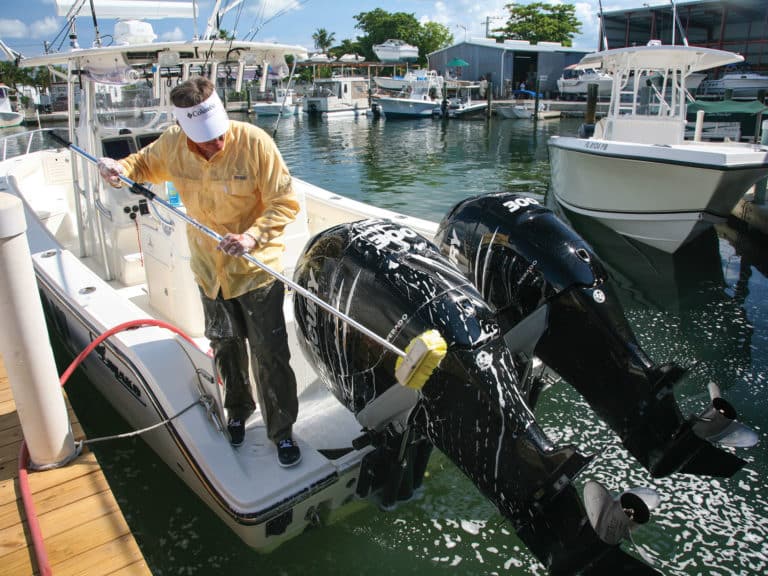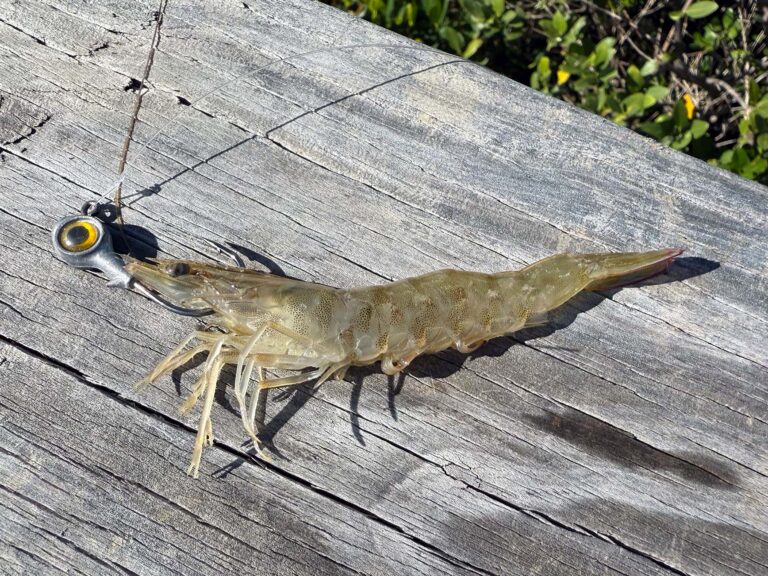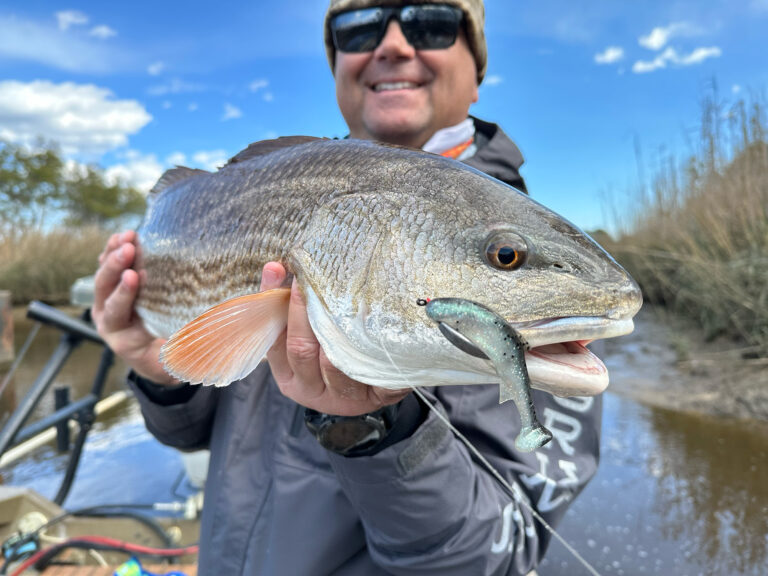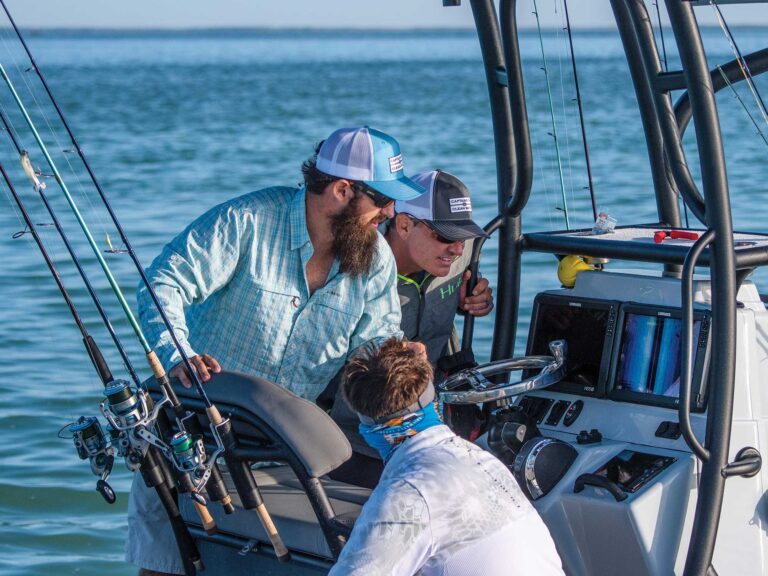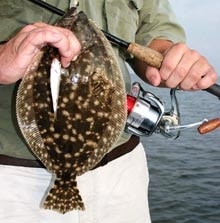
|| |—| || |FLAT OUT: Go with natural baits for flounder in the winter, but be sure to fish them slowly. Photo: Bob McNally| Fast lures produce best.
The philosophy is so ingrained in anglers’ minds that when a situation calls for a different approach, fishermen can’t seem to hit the changeup. After all, fish like Spanish mackerel, blues, jacks and others often turn away if a lure isn’t moving along at trip-hammer speed. However, these species are highly migratory, moving with masses of water that is the temperature they prefer, as well as the bait they relish.
For resident species, such as redfish, snook, flounder and seatrout, anglers who slow down lure and bait presentations catch more and bigger fish when the temperature drops. Slow down for these gamefish and increase your catch rate.
Redfish
January in the Biloxi, Mississippi, marsh is redfish time in many sheltered potholes and ponds. The water is air-clear. The redfish run big-four to seven pounds, sometimes pushing 12 to 15 pounds. It’s all sight-fishing from small kayaks, canoes and flats skiffs, and the fish are vulnerable-but not always active and aggressive. In fact, there are times when redfish will pluck a stationary lure off the bottom before chasing after a fast-moving offering.
“Live baits can be a big help in getting fish like reds to strike,” says Ocean Springs, Mississippi, angler Bo Hamilton. “But a lot of times when bait isn’t available, lures must be fished very slow and deliberate to trigger cold-water, lethargic redfish into hitting.”
Hamilton says another great tactic is to switch to smaller lures, which can be very effective, especially in clear water when reds have no trouble seeing a plug or jig.
“Sometimes smaller lures can be very effective in clear water when reds have no trouble seeing a plug or jig,” says Hamilton. “When it’s really cold and redfish are turned off, lures that don’t have a lot of wiggle or flash are most productive. Copper spinnerbaits are deadly on redfish most of the time. But when fish are lethargic, a jig-like lure in a more subdued color like black or purple, fished very deliberately along bottom may yield more strikes than wiggling, wobbling, flashing spinnerbaits.”
Snook & Mangrove Snapper
Although bait can often be the trigger to turn on cold-weather fish, it often must also be fished differently when metabolic rates of sportfish have slowed down considerably.
Last winter while fishing with Captain Joel Brandenburg in Tampa Bay, friends and I worked a deep, clear creek mouth with live baits for snook and mangrove snapper. Fish covered the bottom, and while we picked a few with live baits, dead baits fished on the bottom within sight of the boat produced more fish faster than any other method. That was the first time I saw snook and snapper prefer bottom-fished dead bait, but Brandenburg sees it regularly.
“Snook get so lazy, so unaggressive, that sometimes a fresh dead bait soaked on bottom is the only thing that makes them bite,” he says. “If live bait isn’t producing the way I think it should, I’ll make the switch.”
Flounder
Flounder anglers also contend with markedly slowed activity when the mercury falls.
“Winter fishing is definitely a different ballgame,” says noted Georgia guide Mark Noble. “When it’s cold, natural baits almost always outproduce lures because fish aren’t aggressive enough to chase an artificial.
“A flounder’s metabolic rate slows down to the point they’ll hit a live mud minnow and just hold it in their mouth, rather than swallow it,” Noble continued. “They react to the bait and take it, but never deep enough that you can set a hook. Sometimes you’ve got to tease them by gently pulling on the bait. They pull back, you pull again, and they finally completely engulf the bait and swim off. That’s when you drive the hook home. It takes a soft touch and a little finesse, but it pays dividends.”
Speckled Trout
Veteran Louisiana and South Florida inshore guide Captain Terry Shaughnessy is a die-hard jig fisherman, and he even uses them in the winter when live bait might otherwise produce more and bigger fish.
“Cold, windy weather definitely turns off seatrout,” says the former Miami Dolphins linebacker. “The key to is to fish slowly and carefully with jigs, and often you’ve got to work a lure through a productive place several times to catch fish. Tipping a jig with a piece shrimp helps, too.”
Muck Matters
On winter’s coldest days, try some mudslinging.
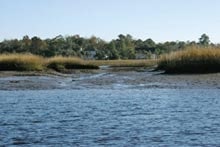
| |HEAT IS ON: Sun-warmed mud bottoms result in more active gamefish. Photo: Bob McNally| Jacksonville Beach, Florida, guide John Dyrssen has spent an average of 300 days per year for more than 40 years, working North Florida’s gamefish-rich inshore waters for seatrout, redfish, flounder and black drum.
Dyrssen’s experience has shown him some traditionally great areas to fish in cold weather.
“Black, mud-bottom inshore areas that warm from a bright winter sun during low tide have a lot more active bait and gamefish than some other good fishing areas,” Dyrssen says. “The sun’s rays pound down on black muck bottoms exposed at low tide, and they absorb heat, especially in calm conditions.
“When the tide floods it heats the water, and the entire food chain is just a bit more active there. That draws feeding fish like seatrout, redfish, flounder and whatever predator fish species are found in an area.”
Dyrssen consistently makes some of his best winter high-tide gamefish catches from mucky, black-bottom bays and creeks.
– B. M.





